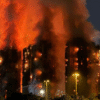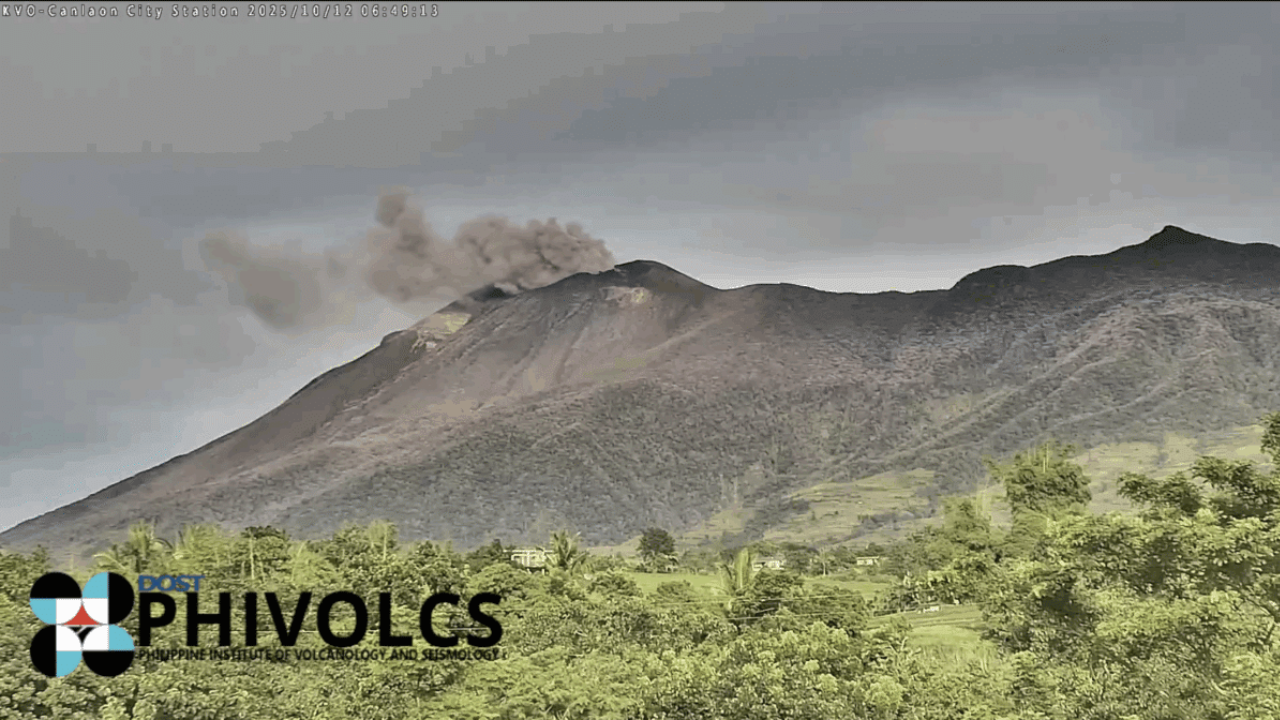
chevron_left
-
 play_arrow
play_arrow
105.1 TMC 105.1 TMC
-
 play_arrow
play_arrow
Cebu Calling Podcast Kuya Magik
81 Quakes Rock Kanlaon Volcano in 10 Hours; Phivolcs Warns of Possible Eruption

share
close
The Philippine Institute of Volcanology and Seismology (Phivolcs) reported an alarming spike in seismic activity at Kanlaon Volcano, where 81 volcano-tectonic earthquakes were recorded in just ten hours on Thursday, October 16, signaling a possible steam-driven or moderately explosive eruption.
According to Phivolcs, the earthquakes occurred between 12 a.m. and 10 a.m., with magnitudes ranging from 0.1 to 2.9 and depths of up to six kilometers beneath the volcano’s northwestern slopes.
The agency said the sharp rise in activity indicates “intensifying rock fracturing caused by rising magma or magmatic gases.”
“VTs are generated by rock fracturing processes, and the increase in VT activity strongly indicates progressive rock-fracturing beneath the volcano as rising magma or magmatic gas drives a path towards the surface,” Phivolcs explained.
Phivolcs said this sudden increase in tremors, combined with elevated sulfur dioxide (SO₂) gas emissions, suggests that pressure is building inside Kanlaon’s volcanic system.
On Wednesday, the volcano emitted an average of 1,879 tonnes of sulfur dioxide per day, a level described as near its medium-term average of 1,830 tonnes since January 1.
“These parameters indicate that the blockage of volcanic gas emission (or closed-system degassing) may result in pressurization and swelling of the edifice potentially leading to moderately explosive eruption,” Phivolcs further noted.
The state volcanology agency said the combination of rising gas emissions and progressive fracturing could trigger a phreatic (steam-driven) explosion or a moderate magmatic eruption if magma continues to rise toward the surface.
In response to the heightened unrest, Alert Level 2 remains in effect over Kanlaon Volcano, which means the volcano is in a state of “increased unrest.” Phivolcs warned that conditions could escalate, and advised local authorities and residents to stay vigilant.
The agency emphasized that the 4-kilometer Permanent Danger Zone (PDZ) around the volcano should remain strictly off-limits due to the risk of sudden eruptions, rockfalls, or pyroclastic density currents.
Communities living within a 6-kilometer radius were also urged to stay alert for possible hazards, especially if volcanic activity intensifies.
Phivolcs reminded the public that volcanic hazards such as ashfall, pyroclastic flows, rockfalls, and ballistic projectiles may occur without warning. It also cautioned that heavy rainfall could trigger lahars, or volcanic mudflows, which may flow into rivers and streams surrounding the volcano.
The agency likewise advised civil aviation authorities to warn pilots against flying close to the volcano’s summit because of the potential for sudden ash emissions that could endanger aircraft.
Kanlaon Volcano, one of the most active volcanoes in the Philippines, straddles the provinces of Negros Occidental and Negros Oriental. It has erupted several times in the past, with its last phreatic explosions recorded in 2023.
Phivolcs said it continues to closely monitor the volcano’s activity through seismic instruments and gas emission sensors. It assured the public that updates will be released as soon as significant developments occur.
For now, residents and local disaster officials are urged to remain calm but prepared. Phivolcs reiterated its call for vigilance and strict adherence to safety protocols, saying the current level of unrest should be treated seriously.
Written by: topsmediacenter
Rate it
Latest posts
Current show

TMC Local Flavours
A selection of songs, made and brewed locally, to tingle your taste buds.
closeUpcoming shows

Top Of The Morning
8:00 am - 9:30 am

News Bites
9:30 am - 10:00 am

Top Of The Morning
10:00 am - 1:00 pm

The Magik Hour
1:00 pm - 2:00 pm

TMC Local Flavours
2:00 pm - 7:00 pm
All rights reserved - Copyright 2025 - Tops Media Center








